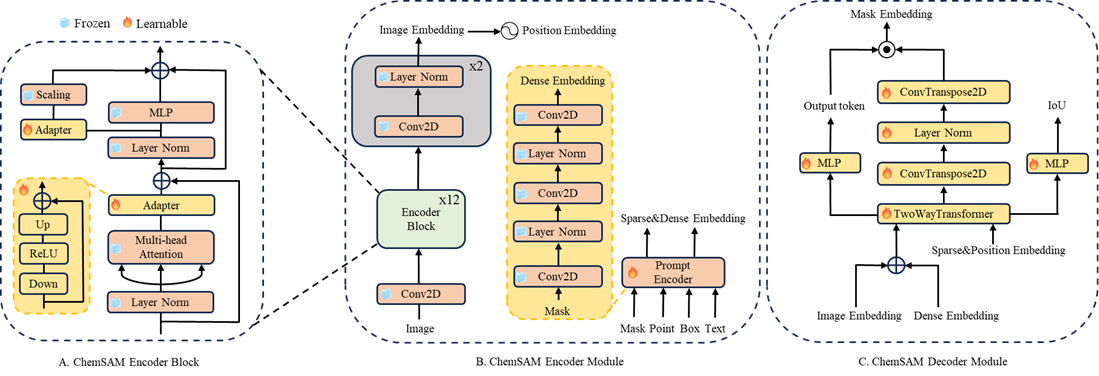Chemical structure segmentation constitutes a pivotal task in cheminformatics, involving the extraction and abstraction of structural information of chemical compounds from text-based sources, including patents and scientific articles. This study introduces a deep learning approach to chemical structure segmentation, employing a Vision Transformer (ViT) to discern the structural patterns of chemical compounds from their graphical representations. The Chemistry-Segment Anything Model (ChemSAM) achieves state-of-the-art results on publicly available benchmark datasets and real-world tasks, underscoring its effectiveness in accurately segmenting chemical structures from text-based sources. Moreover, this deep learning-based approach obviates the need for handcrafted features and demonstrates robustness against variations in image quality and style. During the detection phase, a ViT-based encoder-decoder model is used to identify and locate chemical structure depictions on the input page. This model generates masks to ascertain whether each pixel belongs to a chemical structure, thereby offering a pixel-level classification and indicating the presence or absence of chemical structures at each position. Subsequently, the generated masks are clustered based on their connectivity, and each mask cluster is updated to encapsulate a single structure in the post-processing workflow. This two-step process facilitates the effective automatic extraction of chemical structure depictions from documents. By utilizing the deep learning approach described herein, it is demonstrated that effective performance on low-resolution and densely arranged molecular structural layouts in journal articles and patents is achievable. The paper free download link is available at: Releases
Please download from Goole Drive
The model is used in the company's Protac database project and is currently being integrated into the company's internal software. If need cooperation, please contact: bowen@mr.ai xiaofeng@mr.ai zhangming@mr.ai
Please cite our paper if you use this code in your own work:
@article{tang2024automated,
title={Automated molecular structure segmentation from documents using ChemSAM},
author={Tang, Bowen and Niu, Zhangming and Wang, Xiaofeng and Huang, Junjie and Ma, Chao and Peng, Jing and Jiang, Yinghui and Ge, Ruiquan and Hu, Hongyu and Lin, Luhao and others},
journal={Journal of Cheminformatics},
volume={16},
number={1},
pages={1--13},
year={2024},
publisher={BioMed Central}
}
